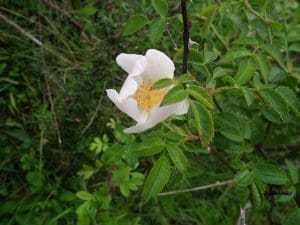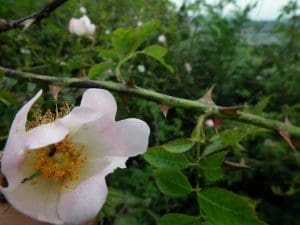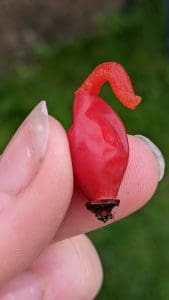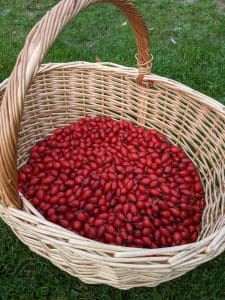Dog Rose / Spring / Summer / Autumn / Edible
The Dog Rose (Rosa canina) is a beloved wildflower that adds a burst of beauty to hedgerows and woodland edges across the UK. With its delicate pink or white blossoms in summer and vibrant red rosehips in autumn, this hardy plant is both visually stunning and a valuable source of wild edibles.
The rosehips, rich in vitamin C, can be harvested to make syrups, jams, teas, and even wine, offering a tangy and nutritious treat.
For foragers, the Dog Rose is a rewarding plant to seek out, but it does require a little preparation—those tiny hairs inside the hips can be an irritant if not properly removed.
In this post, we’ll guide you through identifying the Dog Rose, safely harvesting its rosehips, and turning them into delicious creations to enjoy at home.
Common Names
Dog rose, dog berry
Botanical Name
Rosa canina
Scientific Classification
Kingdom – Plantae
Order –Rosales
Family – Rosaeae
Physical Characteristics
This is a thorny, scrambling, climbing shrub. It has an appearance of multiple over hanging canes and can reach 3 meters if supported.
Leaves
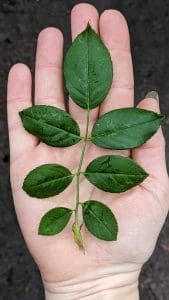
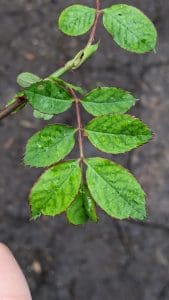
Pinnate with 5-7 leaflets arranged in 4-6 opposite pairs and one on the end) as shown in the first picture. Each leaflet is oval with a shallow to moderate serrated leaf margin and a pointed tip (second photo). The leaf blades grow on alternative sides of the stem (3rd photo).
Stem
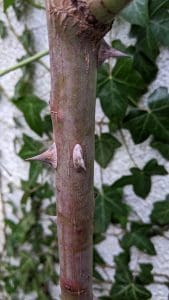
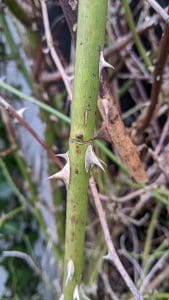
Green at first turning more brown and woody with age, rounded with sporadic curved thorns to help it hook and scramble onto other shrubs.
Flowers
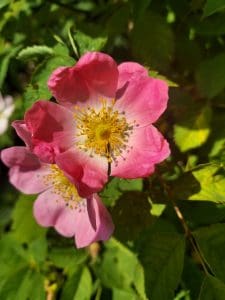
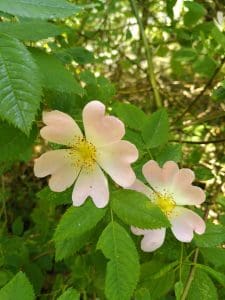
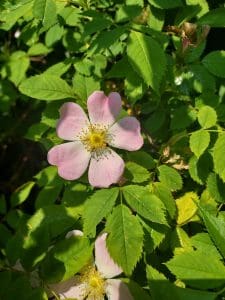
Appear around May- June time. Medium to light pink coloured flowers, yellow centre with many stamens, the pink often get bleached by the sun so older flowers will usually be lighter . Each flower has five petals with a notch making them slightly heart shaped. They have a faint sweet smell.
Fruit
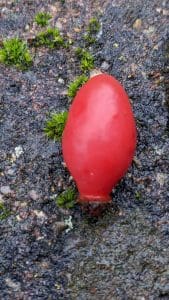
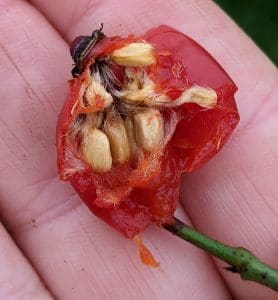
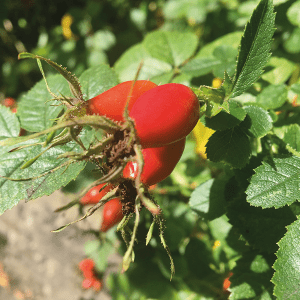
Oblong, smooth and shiny. First appears green in midsummer then ripens to red in autumn. Until the frost makes them softer these are very hard at first. If you cut one open the red flesh is thin with many cream seeds inside surround by golden hairs. The hips have 5 spiky looking leaf-like structures at the end of the hip called a calyx, this is common for fruit in the Rosaceae family.
Habitat
Almost certain to find this in any hedgerow, also abundant on scrub land, down country lanes, woodland edges.
Most common in the South of England but can be found everywhere in the UK.
Known Hazards
Be careful of thorns while picking.
The hairs around the seeds inside Rose hips are like itching powder and highly irritant to skin, eyes and especially to your whole digestive system if eaten.
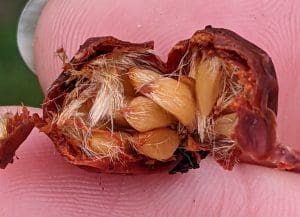
Safety during pregnancy is not yet established so best avoided
Could Be Confused With
Easily confused with other wild roses of which there are about 22 species and they hybridise, which is absolutely no problem as none are poisonous! (Rose hip seed hairs should not be consumed across the board). In fact the petals of different species are particularly great to experiment with for the different colour and flavour infusions they offer, not just wild but also Rose varieties in your garden.
Make sure you check the botanical name which will be in two parts- the genus then the species. To be certain you have the roses we are talking about here the first part should be ‘Rosa’, this is the genus name for wild roses. The name rose with an E on the end is the common name and used across many species and families for both true Roses and other completely unrelated species.
Edible uses
Rose petals and hips in general have been used for food, flavours and medicinal properties for centuries and warrant a guide of their own.
Flowers- from late spring to early summer so about May- June. The petals are the only part needed so if you carefully pull just the petals the rest of the flower will remain to go on to produce a rose hip. They will keep well for a few days in a cool place for long term storage they also dry well.
Rose hips- Autumn, the season is quite long for rose hips, they can be seen even in late summer and last on the shrubs well into January, but simply once the hips turn red they are ripe and ready to use. The traditional time to collect rose hips is just after the first frost as the freezing breaks the cells within making them softer and sweeter. This is called bletting, but we now have the modern technology of freezers so can start earlier if we wish.
When collecting your rose hips it will be useful to take a pair of gloves to protect from the thorns also some secateurs as it’s only when they are really soft do they come away from the stem easily.
Click here for our favourite Rose recipes.
Notes on Herbal uses
The rose hips have been one of the most used wild foods, they have been consumed for centuries especially during WW2 when imports of fresh fruit like lemons and oranges stopped people were paid to collect rose hip which were made into syrup , this was given to children in schools and people in hospitals because of its high vitamin C content. By 1943 500 tonnes were collected annually- enough to create 2.5 million bottles of syrup.
Dog rose like other wild roses is an edible species, for a guide of harvesting, preparation, edible and medicinal uses of wild roses. Click below
Extra notes from the Foragers
The oldest Dog rose is 1000 year old growing on the side of the Hildesheim Cathedral in Germany. Roses are also one of the oldest species in the world.
It is called dog rose because the root was believed to cure the bite of a wild dog.
Many will remember at school using Rose hips as a prank called ‘itchy back’ by opening a rose hip exposing all the itchy hairs and putting it down their victim’s shirt.
Rose flowers are a symbol of love and romance.
Resources



